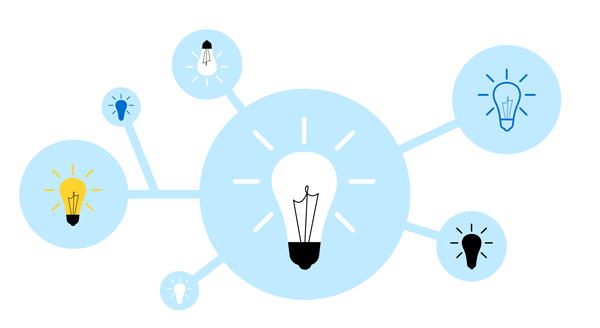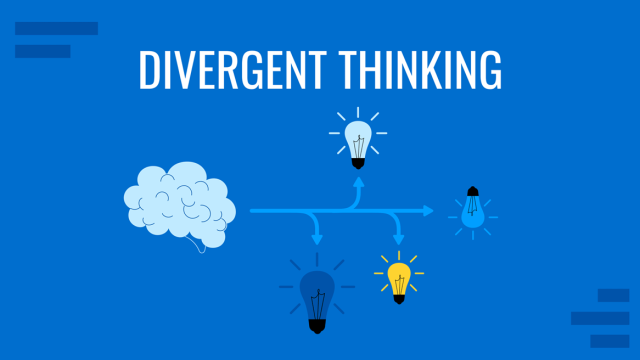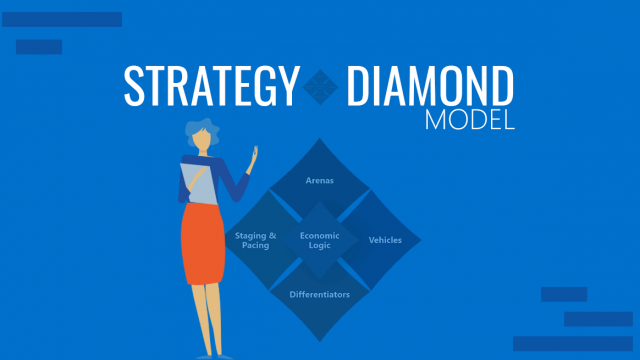
Robert W. Weisberg, in his book, Rethinking Creativity: Inside-the-Box Thinking as the Basis for Innovation, reveals that real innovation relies on inside-the-box thinking. The seed of the idea is usually laid by what we already know. Developing creative skills is the key to innovation. Very often, creativity and innovation are used interchangeably. Creative thinking is not always inherent, but one can surely grow this skill by practice. According to an IBM poll of more than 1,500 CEOs, creativity is the most important factor for future business success, surpassing managerial discipline, ethics, and vision.
What is Creative Thinking?
Creative thinking is a skill that helps you develop appealing and valuable ideas. Oxford Dictionary defines creative thinking as “the use of imagination or original ideas to create something.” Being imaginative and thinking beyond the box is critical to success in every sector. One of the world’s most prominent thinkers on creativity, Edward de Bono, adds that creativity is about breaking out old habits and seeing things in new ways.
It might be a new approach to a challenge or a solution to an employee dispute. Microsoft’s research with YouGov backs up this more technical sense of creativity, with 62 percent of British professionals characterizing it as finding a new approach to solve a problem.
Why is Creative Thinking important?
Creative thinking allows you to take an inventive approach to issues and cultivate open-mindedness.

You can produce new ideas, analyze events, find themes, and design alternatives to established operation systems by using creative thinking.
- Provides confidence: When you employ creativity to explore diverse ideas and concepts, it gives you confidence and encourages you to bring out the best.
- Self-reliance: With an urge to explore more, you become self-reliant. Creativity allows you to work on your goals and achieve them with complete fulfillment.
- Tackle situations: As creative thinking drives you to experiment and innovate, it expands your collective knowledge regarding various methods to handle every situation effortlessly.
- Releases stress: Creative thinking can be a stress buster as it enables you to be innovative beyond any boundaries.
- Express hidden talents: Creative thinking allows you to nurture curiosity and unlock your hidden talents.
- Developing emotional intelligence: Creative thinking promotes considering circumstances from many perspectives, which can help you build empathy and emotional intelligence.
Developing Creative Thinking
Being a creative thinker enables you to develop fresh ways to approach existing situations. It gives you the sense to recognize the importance of various mindsets, methodologies, and theories.
Developing Creative Thinking permits you to link thoughts and see parallels between totally different situations. Let us walk you through some ways to build creative thinking at your workplace:
- Establish purpose and intention: Identify what creativity is and focus on building the right team with the right amount of creativity. Focus on the objectives and blend new ideas for desirable outcomes.
- Build basic skills through communication: Creative thinkers are good at communication skills. Good communication skills can help you express your ideas and share your creativity confidently.
- Encourage autonomy: According to Philip Rosedale, the founder and chairman of Linden Lab, the company’s most significant achievements come from workers’ creativity when given freedom.
- Create a diverse team: Diversity enhances creativity. Allow your teammates from diverse backgrounds and areas of expertise to share their thinking.
- Build motivation: Promote and support the innovative beliefs of your team members to motivate them. Reward your workers for their vivid creativity.
- Provide opportunities to explore: Encourage your team members to collaborate and share their thoughts. Individuals in the team can learn by exploring, testing, and refining new ideas.
- Focus on mastering metacognitive skills: Consider organizing training sessions in techniques like brainstorming, lateral thinking and mind-mapping to master metacognitive skills.
Types of Creative Thinking
Creative thinking involves honing your innovative talents and soft skills to develop fresh ideas. Creative thinking skills are techniques for dealing with a situation through creative perspectives while using the appropriate tools to analyze it and design a solution.
Following are the five types of creating thinking:
- Analytical: Analytical thinking allows you to investigate complicated challenges. It helps you formulate the best decisions for your organization and the recognition and development of solutions. Understanding challenges and analyzing the situation for feasible solutions is an important skill in every role at every level. Developing this skill can help you improve your work and meet business objectives.
- Problem-solving: After thorough research and analysis of the problem, you need to look for an appropriate solution. With problem-solving skills, you can sort and arrange data found during the research process to develop a logical and practical answer.
- Open-mindedness: A creative mind is flexible, and creativity requires fluid thinking. Being more open-minded implies being more receptive to new ideas, viewpoints, cultures, forms of expression, and styles and recognizing that our point of view may not always be correct.
- Communication: The ability to articulate and communicate your thoughts can govern your creative thinking skills at the workplace. It includes listening and processing people’s ideas before providing input and exchanging ideas via writing and speaking for effective communication.
- Organization: Being organized allows you to be more creative and gives your imagination more structure. Employ your organizational abilities to turn your ideas into concrete strategies that you can use to bring change as you explore new ideas.
What are Creative Thinking Techniques?
Creative thinking skills may not be inherited but can indeed be acquired. You can enhance your creative abilities by improvising various strategies and techniques.
Mindmapping

Mind mapping allows you to connect concepts you never imagined could be connected. As a result, it might assist you in coming up with appropriate ideas while applying creative thinking skills. It is a process to write down everything that pops into mind. Create as many ideas as you can; the more you write down, the more likely you will come up with the best idea. Consider mind mapping to organize your thoughts and come to logical conclusions. With the help of a 100% editable mind mapping template, you can present your ideas in a problem-solving discussion within your team or use it along with other creative thinking techniques to enrich your discussions.
Brainstorming

The central notion behind brainstorming is that having many creative possible ideas makes it simpler to choose the best one. This innovative thinking technique may effectively solve small or large-scale problems that demand creativity. The primary purpose is to build a group of people with whom you can freely exchange thoughts. Assist your team members in developing an experimental approach that produces outcomes at the workplace with brainstorming.
Lateral thinking

Emphasize generating new ideas in your organization while minimizing the details of how you can implement those ideas. Lateral thinking helps your thoughts wander freely and examine options that may otherwise go unnoticed. It involves looking at a problem from unconventional perspectives and coming up with innovative solutions as a result.
Reframing

To come up with a fresh, inventive strategy, you’ll need to look at an issue or a scenario in a different manner, which requires reframing. Explore alternative interpretations of words, analyze the context, and broaden your perspective to spot something new and anticipate future roadblocks.
Mood boards

A mood board is a visual graphic or representation of your ideas put together in one place. It gives your audience a clear vision of what an idea would look like after its execution. Plot your company’s desired goals with this image board creative thinking tool.
How to think critically and creatively?
Creativity is all about exploring and looking for new ideas. When we think out of the box and step outside of what we already know, we tend to draw new connections. This usually results in fresh insights, new ideas, and innovative solutions to problems that we could not have imagined previously. Critical thinking emphasizes analyzing and breaking down the problem, and creative thinking can bring about an appropriate solution for the analyzed data. That is the cornerstone of problem-solving with creative thinking.
Let us look at the example to understand how to solve problems using creative thinking.
When presented with a problem at the workplace, the employee analyzes it and then does thorough research. Then he shares (communicates) the problem with the teammate who presents him with progressive ideas (brainstorming and reframing) and hence a solution.
Examples of Creative Thinking in Business
Adobe’s Creative Dividend study states that “More companies that foster creativity achieve exceptional revenue growth than peers.” Creativity is a skill that you can acquire and improve through practice. On the other hand, businesses must assist their workers in using their creative muscles by providing the correct culture, environment, training, and technology.
Let’s walk you through a set of examples of creative thinking in the business:
- Microsoft recognized that out-of-date technologies and procedures and ill-equipped workspaces restricted the capacity to think creatively and therefore designed a range of devices to help people discover their creative potential at work.
- Steve Jobs invented a new product like iPod due to brainstorming and lateral thinking when no one could ever imagine it.
Strike a note with your target audience with an insightful presentation on creative thinking. Deliver an innovative presentation with fresh ideas to your investors using creative thinking skills templates.
FAQs
Can creative thinking be developed?
Yes, creative thinking can be cultivated through practice, learning, and applying various techniques such as brainstorming, mind mapping, lateral thinking, and reframing. It’s not necessarily an innate ability but a skill that can be improved over time.
What are the types of creative thinking?
Creative thinking can be categorized into the following types:
– Analytical: Investigating challenges and identifying solutions.
– Problem-solving: Developing logical and practical solutions.
– Open-mindedness: Embracing diverse ideas and viewpoints.
– Communication: Articulating and sharing thoughts effectively.
– Organization: Structuring ideas to turn them into actionable strategies.
What are some techniques for creative thinking?
Some effective creative thinking techniques include:
– Mind Mapping: Connecting and organizing thoughts visually.
– Brainstorming: Generating a broad range of ideas collaboratively.
– Lateral Thinking: Exploring unconventional approaches to problems.
– Reframing: Viewing problems from different perspectives for new insights.
– Mood Boards: Using visual representations to communicate ideas.
How does creative thinking enhance business success?
Creative thinking in business drives innovation, helps solve complex problems, and encourages team collaboration. Companies that foster creativity are more likely to achieve revenue growth, stay competitive, and develop unique products or services.
What role does creative thinking play in problem-solving?
Creative thinking allows individuals to analyze problems critically and approach them with fresh, innovative solutions. It emphasizes exploring unconventional ideas and finding new connections to address challenges effectively.
Can creative thinking help reduce stress?
Yes, creative thinking can be a stress buster. By encouraging individuals to think freely and explore without boundaries, it provides an outlet for self-expression and innovative problem-solving, which can reduce mental pressure.
Final Words
Whatever field you work in, you’ll discover that creative thinking can help you achieve your ambitions. Remember that everyone has the power to be creative and that creativity is primarily defined by the ability to think in unconventional ways. Help your staff to stretch their creative muscles by giving coaching training that will allow them to improve their creative thinking abilities.
Alternatively, we recommend our article on Design Thinking Process to solve company problems in an effective and innovatively way.


